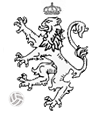
Document | arfsh.com
A document created by arfsh.com for the whole football community
Kálmán Konrád | Konrád II.
Author: Isaque Argolo | Creation Date: 2021-03-19 12:08:47
Data providers: Isaque Argolo.
Archive(s): .
Kálmán Konrád — Csámi — was a Hungarian footballer and coach. One of the most revolutionary players of all-time, the tactician and extraklassisz Kálmán Konrád was a key player for the development of the Vienna school — "bécsi-ískola", "vienna schule" —, as he was seen as a role-model for many players as the best example of how a footballer should be, this includes the likes of Matthias Sindelar & Friederich Gschweidl, two of the best examples of Scheiberlspiel. régi MTK Csámi moved to the white-blue side in 1910. Already seen as an abstract prodigy, the new trainning applied to Konrád II. helped with his evolution. Roberton, yet coach of MTK, who was also in charge of the youth divisions of the club, saw in Konrád II. a potential player to be a master. Not only he taught him the Scottish style but also was seen by Csámi as a paternal figure. Konrád II. always mentioned Robertson as his great master. The heyday of MTK was about to start alongside the First World War, their new school and brand new prepared players would dominate the Continent for the next years. Konrád II., alongside the other two stars, Alfréd Schaffer & Imre Schlosser, became one of the best players in the world. According to many specialists, he was seen as one of the best schemers in the world. The whole team was smooth, precisely with Konrád II. giving many passes to Schaffer & Scholosser, both excepcional shooters. Wiener Amateur After the 1918/19 season, Hugo Meisl brought the two brothers — Jenő Konrád & Kálmán Konrád — to Wiener Amateur S.V., a team which, back in the day, did not have a the caliber to face some of the best teams in Austria. With Konrád's II. arrival, Wiener Amateur achieved their best position in the league and became a strong competitive side in Csámi's first season. His transfer was a complete success, not only for the Wiener Amateur but for the entire Austrian football. It was the beginning of the bécsi-ískola, a school which had mainly Konrád as their role-model. According to Hugo Meisl himself, one of the best choices that he made in his entire life was to bring the two Konráds to Austria; Konrád II. was given the label of father of "Vienna Schule". The change was notorious, not only in Austrian territory, but Wiener Amateur became one of the best teams in the World. Characteristics Konrád II. was known for having a high quality of technique, his skills with the ball were above some of the best players in the world. He managed to do what he wanted with the ball, his control was superb; his passes were precise; his dazzling dribbling could get him out of opponent pressure. He was, according by many, an artist of the ball, a Rastelli according to the Central European media. Konrád was seen, in many aspects, as a complete technician. Aligned with his calm, he potentialized his skills. In fact, he was more of a player who had high attributes of technique and tactics. However, his physical & athletical sides were not an example. He was not strong and did not have speed that could reach the highest standards. Konrád II. started as a centerhalf, but soon managed to find himself playing as inside forward or centre-forwards. His style was different from the others, due to him not being a physical and athletical player. It was common to see Konrád II. behind the other four forwards, he was the schemer of the team, always planning the best scientific play. He played in many variations of the forward line, even in the W-Formation. He was, indeed, a player that could adapt to any sequence which his coach gave to the team. Aranycsapat I.:Szabó Schaffer BraunSchlosser Konrád II.Aranycsapat II.:Szabó Konrád II. BraunSchlosser SchafferFrom all variations of MTK's forward line demonstrated towards their heyday, these two were the most common. Csámi could play either as centre-forward or as the right inside forward of the team. Although both are two different positions, Konrád II. would systematically stay behind the other forwards. As a insider, not only he had the main role to connect the middle line with the centre-forward & the winger, but also help the defensive system. — For myself, without modesty, I intended the role of the inside left and not the center, because I would dare to entrust the control of the striker line to Konrád II., and I, as an inside left, would have more opportunities to score in this position. Irta: Alfréd Schaffer on his Hungarian XI for the VIII. Olympiad. On the other hand, as a centre-forward, with his calm and scientific play, he would create chances for the two excepcional insiders whose main role was to infiltrare the defensive system. According to Alfréd Schaffer himself, he would rather have Konrád II. as the main option for the centre-forward position. It is algo good to mention that Konrád II. also played as right winger for the club, but with the arrival of József Braun, he was a better option playing in the inside trio.
© arfsh.com & Isaque Argolo 2024. All Rights Reserved.